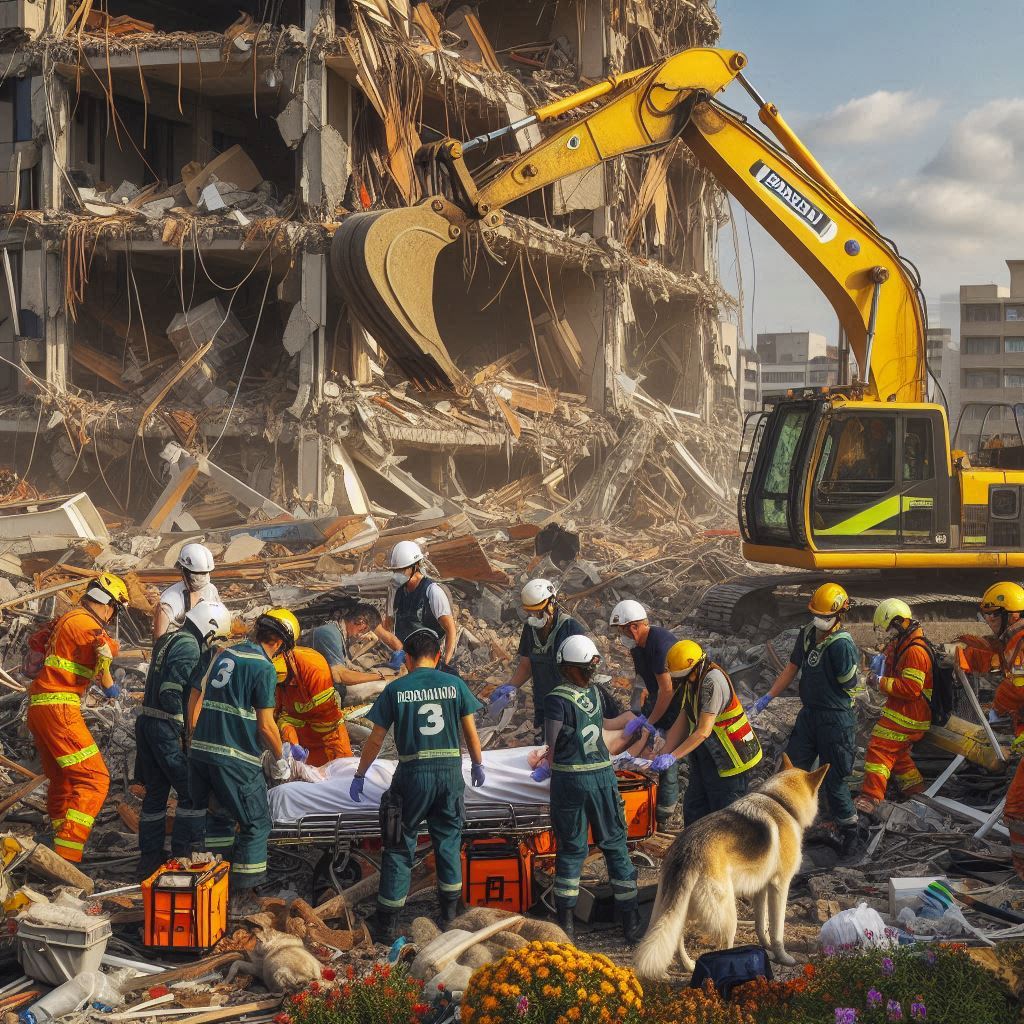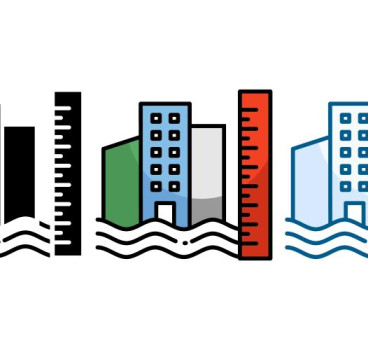The great Lisbon earthquake and seismic design
On a seemingly ordinary day, November 1st, 1755, a tremor unlike any other ripped through Lisbon, Portugal. The Great Lisbon Earthquake, estimated at a staggering 8.5-9.0 on the Richter scale, triggered a monstrous tsunami and widespread fires, leaving behind a scene of unimaginable devastation. This catastrophic event, while a horrific tragedy, became a pivotal moment in the history of construction, forever changing the way we design and build structures in earthquake-prone regions writes John Ridgeway.
Lisbon, a flourishing port city at the time, was utterly decimated. The earthquake's violent tremors caused widespread building collapses, burying thousands beneath tons of debris. The subsequent tsunami surged 49 feet (15 metres) high, further adding to the destruction along the waterfront. Estimates suggest tens of thousands perished, with some accounts reaching as high as 100,000 fatalities. The city burned for days, fuelled by the toppling of countless buildings constructed primarily of wood and unreinforced masonry.
The sheer scale of destruction in Lisbon exposed the fatal flaws of traditional construction practices. Buildings designed solely for aesthetics and lacking any seismic resistance crumbled under the earthquake's force. This event marked a turning point, sparking a critical reassessment of building methods and igniting the development of new, earthquake-resistant design principles.
Sebastião José de Carvalho e Melo, the Marquês de Pombal, Portugal's Prime Minister at the time, took swift and decisive action in the wake of the disaster. Beyond the immediate rescue and relief efforts, Pombal recognised the need to rebuild Lisbon in a way that could withstand future earthquakes. He commissioned a team of architects and engineers, including military engineer Manuel da Maia, to develop new construction techniques.
The principles developed in the aftermath of the Lisbon earthquake focused on several key elements. Buildings were constructed on deeper and more stable foundations, often using wood pilings driven deep into the ground.
Wood, a more flexible material compared to unreinforced masonry, was increasingly used for structural elements and walls were designed to act independently, preventing the progressive collapse of entire structures. The use of fire-resistant materials, such as stone and brick, also became more prominent to reduce the risk of post-earthquake fires.
Evolution of seismic design
These foundational principles laid down in Lisbon after the 1755 earthquake served as the groundwork for the ongoing evolution of seismic design. The 19th and 20th centuries, in particular, witnessed significant advancements in our understanding of earthquake forces and structural behaviour.
Such advancements included the Seismic Shear Wave Velocity Test, developed in the early 20th century, which measured the speed of seismic waves through soil, allowing engineers to design foundations tailored to specific site conditions.
The invention of reinforced concrete and the widespread adoption of structural steel in the late 19th and early 20th centuries provided even more robust materials for earthquake-resistant construction. Technological advancements in the latter half of the 20th century also brought sophisticated computer modelling and seismic analysis tools to the forefront. Engineers can now simulate earthquake forces on structures and identify potential weaknesses before construction begins.

Modern seismic design codes and standards are constantly evolving, incorporating the latest scientific knowledge and lessons learned from past earthquakes. These codes specify construction practices, materials and structural elements essential for buildings to withstand earthquakes with minimal damage. Seismic zoning maps further inform design decisions, indicating the level of earthquake intensity a specific region is likely to experience.
In the aftermath of a natural disaster like an earthquake, the immediate focus is on rescue, recovery and relief efforts. However, the long-term path towards a resilient future lies in the process of reconstruction. This phase presents both challenges and opportunities, offering a chance to rebuild not just infrastructure, but also to incorporate sustainable practices for a greener and more resilient future.
Post-disaster reconstruction involves a complex interplay of factors, presenting a multitude of challenges. Disasters often cripple a region's financial resources, making it difficult to secure funding for reconstruction efforts, which is why international aid and support plays such a crucial role in bridging the gap.
The sheer volume of debris generated by a disaster also creates a significant logistical challenge. Efficient and environmentally friendly methods for debris removal and disposal are essential. Displaced communities require temporary or permanent housing solutions while reconstruction progresses. Balancing speed with quality and affordability therefore becomes a key concern.
As we have shown, the economic impact of disasters can be devastating, particularly for communities reliant on agriculture, tourism, or small businesses. Reconstruction efforts are needed that prioritise measures that revitalise livelihoods and get people back on their feet economically.
However, while daunting, post-disaster reconstruction also presents a unique opportunity to build back better. Rebuilding infrastructure can be an opportunity to incorporate features that enhance resilience to future disasters. This could include elevating buildings in flood-prone areas or using earthquake-resistant construction techniques.
Investing in renewable energy sources, sustainable wastewater management systems and green spaces can also foster a more environmentally friendly and resource-efficient built environment. Furthermore, reconstruction efforts can integrate disaster risk reduction strategies like early warning systems and improved building codes to minimise the impact of future events.
Several recent disaster recovery efforts illustrate the successful integration of such sustainability principles. Following the devastating earthquake, in Nepal in 2015, officials embarked on a reconstruction programme emphasising earthquake-resistant construction and the use of locally sourced, sustainable materials like bamboo.
In the wake of Hurricane Sandy in 2012, New York City implemented a comprehensive plan for rebuilding coastal defences with natural solutions like restored wetlands and elevated boardwalks, enhancing protection against future storms.
So, we can see that while disasters are destructive, they can also act as catalysts for positive change. By embracing the principles of sustainable development during post-disaster reconstruction, we can create safer, more resilient communities that are better equipped to withstand future challenges. Building back better is not just about restoring what was lost, but about building a future that is more environmentally sound, economically viable and equitable for all.
The Great Lisbon Earthquake serves as a stark reminder of the destructive power of earthquakes and the critical importance of seismic design. By learning from this devastating event, we continue to refine and improve our construction practices, building structures that are more resilient to earthquakes and safeguarding lives in vulnerable regions around the world.
Additional Blogs

When fire breaks out who really knows the system
The story that caught my attention recently wasn’t about fire growth or building loss, it was about confusion. Specifically, the confusion faced by the fire service when arriving at buildings...
Read moreThe design and development of Nexus Layouts
When Zentia set out to rethink the suspended ceiling, the brief was clear: deliver greater creative freedom for designers, more distinctive visual identity for clients, and a solution that could keep...
Read more

The 100-year construction project or why longevity Is the new sustainability
For decades, the construction sector has defined sustainability through metrics such as operational energy, embodied carbon, material efficiency and circularity. These measures remain vital, but a...
Read more